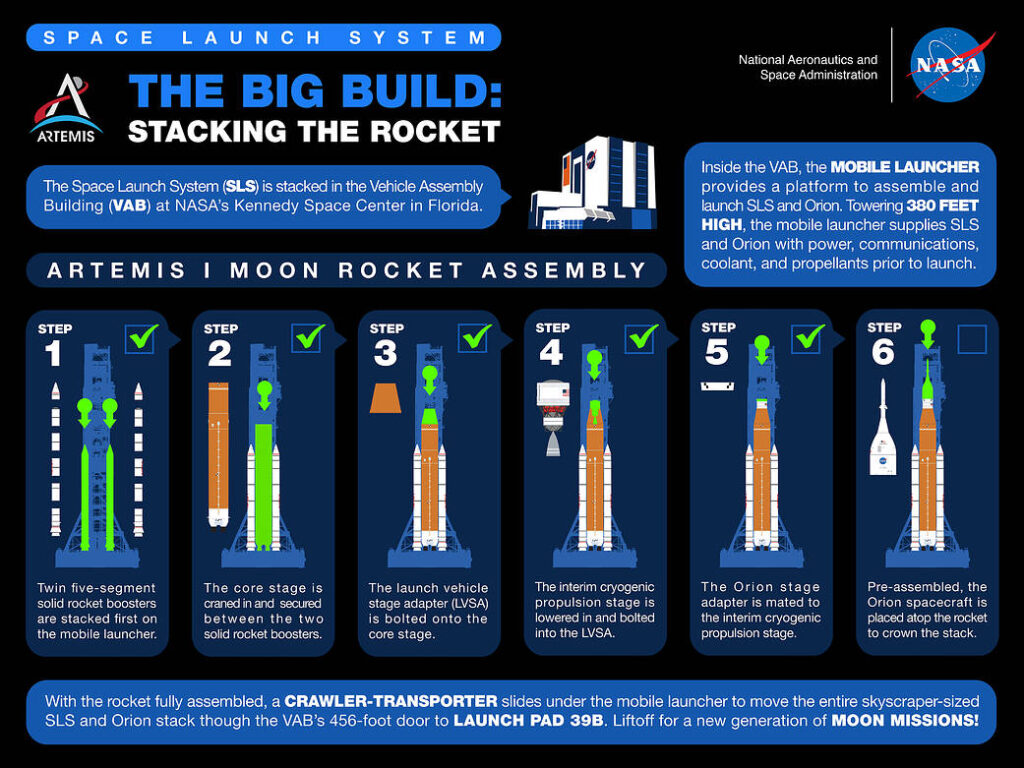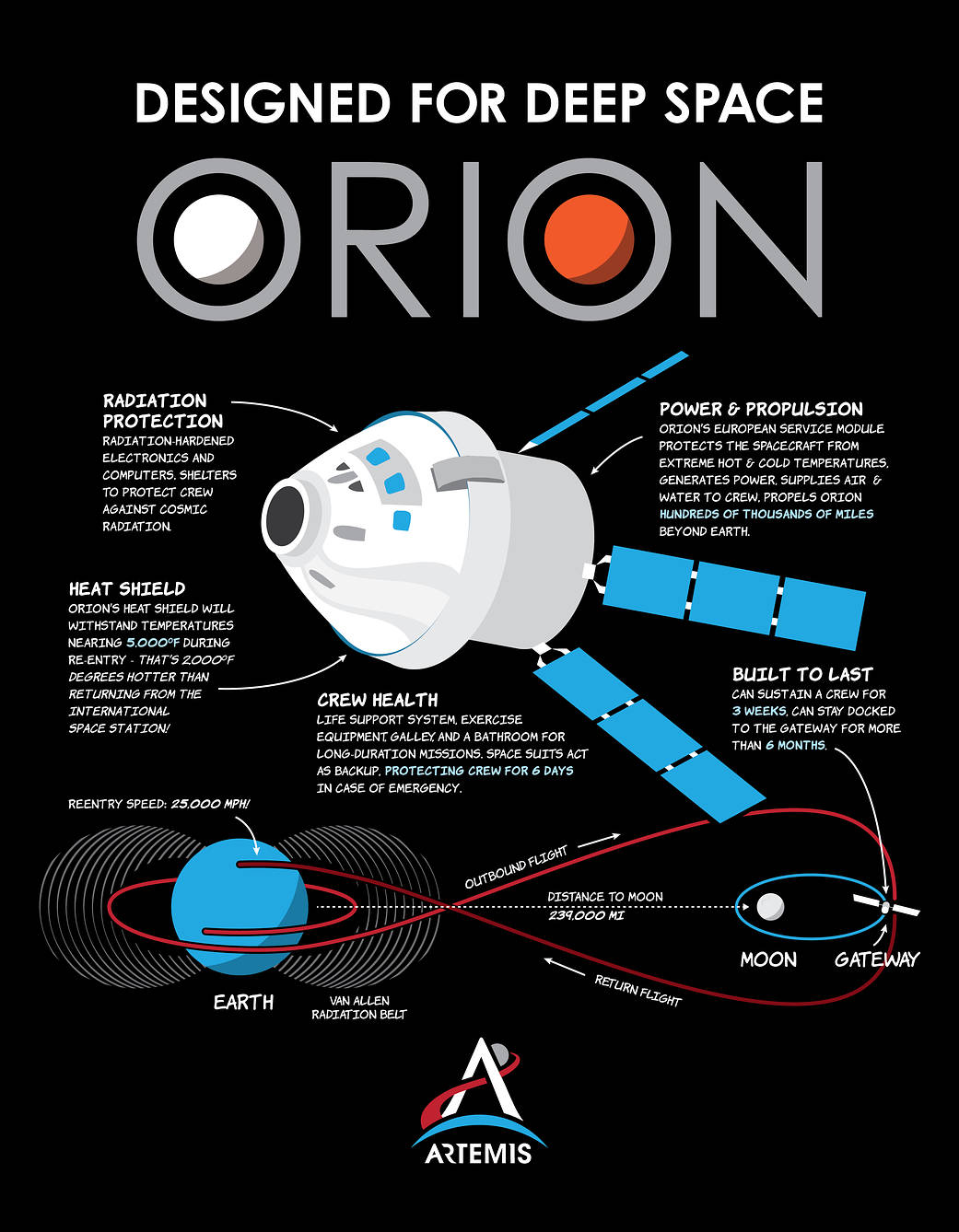
Well, it looks like the Artemis I mission has finally happened! After more than 10 years of development, the Space Launch System rocket and Orion Crew Capsule, were successfully launched November 16, 2022. The launch and the subsequent uncrewed 25-day flight of Orion demonstrated that SLS and Orion can operate in a spaceflight environment. The next step will be a first flight with crew on Artemis II, now scheduled for 2024. The long-term goal of Artemis is to build a sustainable human presence on the Moon to prepare for missions to Mars.
SLS, Orion, and supporting ground systems, such as a renovated Vertical Assembly Building and a new Mobile Launch System, are among NASA’s most expensive and challenged efforts. The programs collectively cost at least $30 billion–about $5 billion more planned–and the first launch is about 4 years late. Moreover, NASA is expected to spend more than $90 billion for the first five Artemis missions. Though there are concerns about costs, contracts, technologies, management, oversight, and the future direction of these programs, the programs have managed to maintain support from Congress and three Administrations for more than decade. Further, first flight does not mark the end of development. NASA is building a second mobile launcher, for instance, as well as a new upper stage for SLS.
Space Launch System
According to NASA, SLS is the world’s most powerful rocket. It can carry more payload to deep space than any other vehicle. SLS is also expensive, costing nearly $12 billion just to develop the first version. Some wonder if SLS is fiscally sustainable going forward, but for now, NASA is counting on SLS for the future of human space exploration.



SLS is designed to be evolvable, which makes it possible to fly more types of missions, including human missions to to the Moon and Mars and robotic scientific missions to places like the Moon, Mars, Saturn and Jupiter.

Some parts of the rocket are new and others date back to the shuttle era, though upgraded with modern features. Aerojet Rocketdyne, for example, is upgrading an inventory of 16 RS-25 space shuttle engines to SLS performance requirements. Two shuttle-derived solid rocket boosters provide more than 75 percent of the vehicle’s thrust during the first two minutes of flight. Northrop Grumman’s Northern Utah team modified the original shuttle’s configuration of four propellant segments to a five-segment version.
Orion
Orion will be able to carry 4 crew members to deep space (though on Artemis I, it will not carry crew). It has a launch abort system positioned on a tower atop of the crew module that can activate within milliseconds to propel the vehicle to safety. It also has a service module, created in collaboration with the European Space Agency, which provides propulsion for orbital transfer, power and thermal control, altitude and high-altitude ascent aborts. While mated with the crew module, the service module also provides water and air to support the crew.

Acquisition Challenges
SLS is expensive (nearly $12 billion to develop), over budget ($3 billion) and 4 years late. We do not yet know what the production costs will be yet or what it will cost to develop the next versions of the rocket. Most government rocket programs experience cost overruns and schedule delays. They are inherently challenging. But it was expected that SLS would do better since it was relying on legacy systems and contracts already in place to get a head start.
There are many reasons why the program was troubled. Contractor performance and workmanship was more during crucial phases. The contracts themselves were not structured to incentivize better performance or enable good program oversight. Requirements changes disrupted early efforts. Flat budgets hampered the ability to speed up the program, properly sequence the work, and address problems when needed. These and other management practices exacerbated what was already a technical daunting effort. Many improvements were made to address these problems, but they came after delays and cost growth already occurred. One last source of delay was COVID.
Orion is even more expensive–nearly $14 billion–and is over 37% over its original estimate. It has been in development since 2006 as it started as part of a prior program known as Constellation. Much of its cost and schedule growth are tied to delays in building the service module and the addition of new capabilities for rendezvous proximity operations and docking. Similar to SLS, GAO and Inspector General reports cited concerns about flat budgets, lack of management reserves, and contract incentives.
The ground systems supporting SLS and Orion also saw large cost increases, schedule delays, management and oversight problems. Like Orion, the mobile launcher, for example, had its beginnings in the Constellation program, and needed significant modifications to lift a much heavier SLS. NASA underestimated the work needed to retrofit the launcher. The program experienced numerous design errors, requirements changes, and challenges fabricating the connections known as umbilicals that provide power, communications, oxygen, and fuel. The NASA Inspector General said that NASA exacerbated these issues by accepting unproven and untested designs from contractors. NASA is building a second launcher for future versions of SLS, but the IG has reported that the contract for that effort has already doubled in cost and the schedule has slipped 2.5 years because the contractor severely underestimated the scope and complexity of the project.
There are also challenges with transparency into costs for Artemis. For example, NASA has produced cost estimates for the first flight of SLS and the second flight of Orion. But it has not yet produced estimates for SLS or the ground systems beyond Artemis I. Orion does not have a baseline beyond Artemis II. The IG and GAO have both pointed out that NASA has opted not to provide cost and schedule estimates for each Artemis mission as a whole to Congress and other stakeholders. The auditors have reported on deficiencies with life-cycle cost baselines that prevent Congress from detecting overruns. The IG has also criticized NASA for circumventing required cost and schedule controls by categorizing certain production costs as operations costs when they should be included with development costs. “Ultimately, NASA is not providing full visibility into its investments as it begins a multi-decade initiative to transport humans to Mars at a cost that could easily reach into the hundreds of billions of dollars,” the IG said this year.
The high cost of Artemis, acquisition problems and what is increasingly being perceived as outmoded ways of doing business are ramping up calls for NASA to make changes. “With the emerging capabilities provided by commercial partners, the Agency may have future options that can help control costs to meet its exploration goals,” the NASA IG said in a 2022 report. NASA’s own Administrator, Bill Nelson, recently stressed that NASA should move away from cost-plus contracts, the type of contracts used for SLS and Orion, to fixed-price contracts, which were used to help develop and acquire crew launch services from SpaceX and Boeing, and cargo transportation services from SpaceX and Northrop Grumman. “You get it done with that competitive spirit, you get it done cheaper and that allows us to move away from what has been a plague on use in the past, which is a cost-plus contract,” Nelson recently testified.

Additional Sources of Info:
NASA Struggling with Construction of Second Artemis Mobile Launcher | Satsnaps
SLS Fact Sheet December 2021 (nasa.gov)
NASA’s monster rocket set to roll out after more than a decade of delays – The Verge (Excellent article on SLS struggles. I may be biased since I was interviewed for it).
Hearings | Hearings & Legislation | House Committee on Science, Space and Technology (Contains recent testimony statements from the GAO, NASA IG, NASA Aerospace Safety Advisory Board, and the American Institute of Astronautics and Aeronautics).
NASA IG: NASA’S MANAGEMENT OF THE ARTEMIS MISSIONS – November 15, 2021
Final Report – IG-20-012 – NASA’s Management of Space Launch System Program Costs and Contracts
NASA Management of the SLS System Stages Contract Final Report – IG-19-001 (nasa.gov)
GAO-17-414, NASA HUMAN SPACE EXPLORATION: Delay Likely for First Exploration Mission
NASA Cost Estimating and Report for Multi-Mission Programs IG-22-011.pdf (nasa.gov)
NASA’s Artemis Delays Fuel Controversy over Rocket Design – Scientific American






